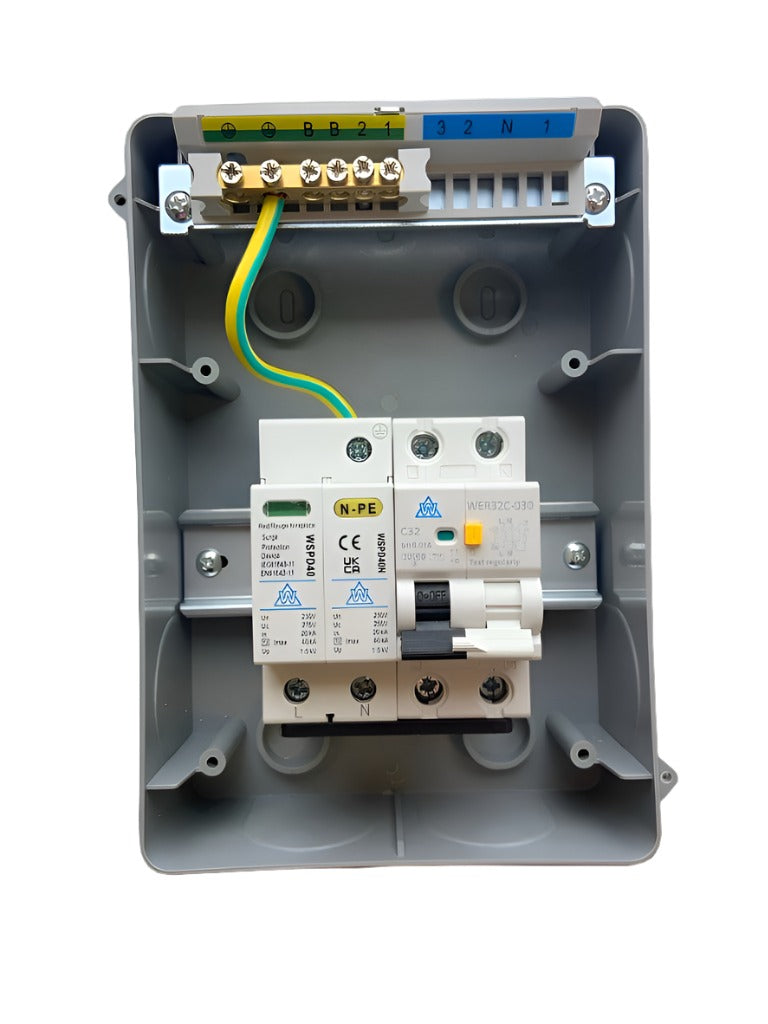The Duty of Customer Systems in Efficient Energy Management Systems
Customer units are important to effective energy administration systems, working as the main circulation points for electric power within structures. By including breaker, they protect circuits from prospective overloads, thus keeping safety and stopping considerable failures. The development of clever innovations has actually further enhanced their performance, enabling real-time data monitoring and nuanced energy usage analysis. This combination not only maximizes power usage yet additionally promotes the incorporation of renewable resource sources, therefore promoting sustainable practices. Exactly how, then, do these innovations convert to concrete advantages in daily energy management?
Understanding Customer Devices

Understanding the role of consumer systems starts with identifying their important feature in securing electrical systems. By isolating faults within specific circuits, customer units avoid widespread outages and potential fire hazards. This seclusion is accomplished through the use of circuit breakers that journey or merges that strike when a fault is discovered, thus removing the electric circulation to the impacted circuit.
Moreover, customer units facilitate the well organized distribution of power, boosting the efficiency of energy usage. They permit the methodical management of electric loads, which can be specifically crucial in business and industrial settings where need can change substantially. Effectively maintained consumer units add to the longevity of electrical systems and help in reducing downtime created by electrical failings, eventually sustaining the seamless operation of energy-dependent facilities.
Smart Technologies Integration

A crucial advantage of smart customer units is their capacity to leverage advanced formulas and device understanding for predictive analytics. This permits for preemptive adjustments based upon use patterns, weather report, and other variables, significantly boosting general effectiveness. Wise customer devices assist in demand reaction programs, where energy use can be dynamically changed throughout height durations to maintain the grid and reduce expenses.
The assimilation of renewable resource sources, such as solar and wind, is additionally structured via smart consumer systems. By wisely taking care of the intermittency of these resources, these units guarantee a balanced and trusted power supply. Additionally, smart consumer devices boost customer involvement by providing comprehensive insights and push-button control capacities through mobile applications, fostering a more aggressive approach to power preservation and sustainability.
Tracking Energy Intake
Structure on the capabilities of smart innovations assimilation, monitoring power usage ends up being a critical This Site emphasis within power monitoring systems. Reliable surveillance acts as the structure for recognizing power inadequacies and implementing corrective measures. By leveraging innovative metering framework (AMI), real-time data on energy use can be gathered at granular levels, providing beneficial insights right into usage patterns and peak demand durations. This data-centric technique allows both consumers and energy managers to make educated decisions targeted at reducing waste and enhancing total performance.
Smart meters and Web of Points (IoT) tools play a critical function in this monitoring process. These gadgets can track power usage in real-time, transferring information to central systems for evaluation.
The assimilation of these innovations not just encourages customers with detailed details concerning their energy use but additionally supports energy companies in managing load distribution better. Inevitably, precise and continual tracking is indispensable for achieving power efficiency, cost savings, and sustainability objectives within energy monitoring systems.
Optimizing Appliance Use

One efficient approach entails determining top and off-peak hours to shift energy-intensive activities, such as laundry or dishwashing, to times when power demand is reduced. This not just decreases strain on the grid yet additionally maximizes lower energy tariffs. In addition, incorporating equipment learning algorithms permits anticipating upkeep, guaranteeing home appliances operate at optimal performance and extending their lifespan.
Energy monitoring systems can also include user-specific preferences and actions to tailor device usage routines. As an example, clever lighting systems can adjust illumination based on occupancy and all-natural light accessibility, while heating and cooling systems can maintain convenience levels without extreme power use.
Promoting Sustainability
Advertising sustainability within power administration systems includes not only enhancing effectiveness yet also cultivating environmentally liable practices. Consumer systems are integral to this procedure, as they offer real-time data and control devices that enable users to keep an eye on and decrease their power intake. By leveraging advanced innovations, customer systems can identify energy-saving possibilities and help with the assimilation of renewable resource resources like solar and wind power.
One crucial element of advertising sustainability is educating consumers on the benefits of responsible energy use. With detailed insights given by customer devices, customers can make enlightened decisions that reduce their carbon impact. These systems can suggest optimum times for running high-energy devices based on grid need and eco-friendly power schedule, thereby minimizing dependence on fossil fuels.
Moreover, customer devices sustain the adoption of smart grid modern technologies, which enhance the total performance and integrity of power circulation. By making it possible for two-way communication between consumers and energy suppliers, these systems can dynamically readjust to power needs, lowering waste and promoting making use of lasting power techniques.
Final Thought
Customer units, as integral elements of power management systems, dramatically improve electric safety and performance within buildings through circuit defense and clever modern technology integration. check my site Furthermore, the incorporation of sustainable power resources promotes lasting techniques, contributing to minimized total power usage and reduced carbon impacts.
Advances in clever innovations have actually changed the abilities of power management systems, especially via the assimilation of smart consumer units.Building on the capacities of smart innovations integration, keeping an eye on power usage ends up being a critical focus within energy management systems.Effective home appliance use optimization is a vital element of energy administration systems, intending to enhance efficiency and reduce unneeded energy consumption.Consumer devices, as integral parts of power management systems, substantially improve electrical safety and efficiency within buildings through circuit protection and clever modern technology assimilation. In addition, the consolidation of renewable energy sources advertises lasting methods, adding to reduced general energy intake and lower carbon impacts.